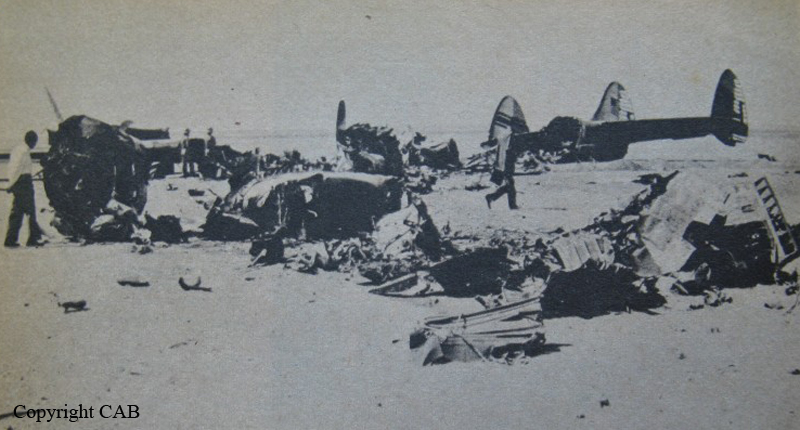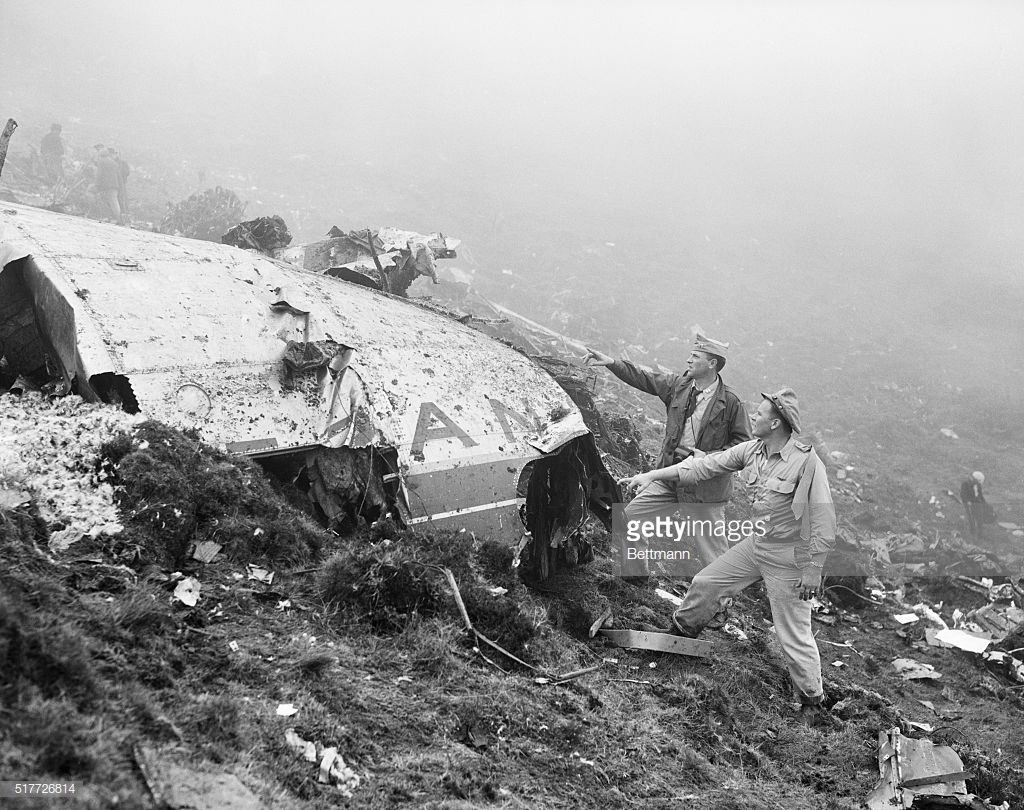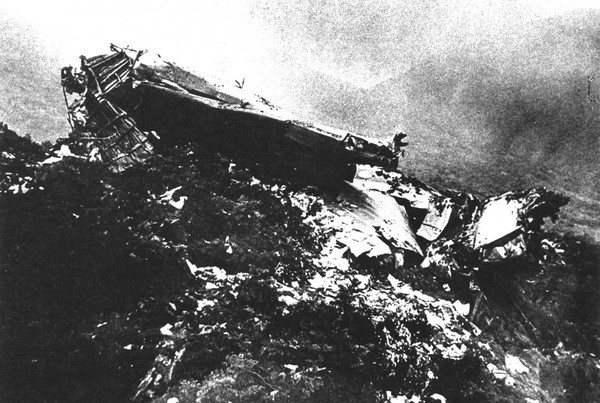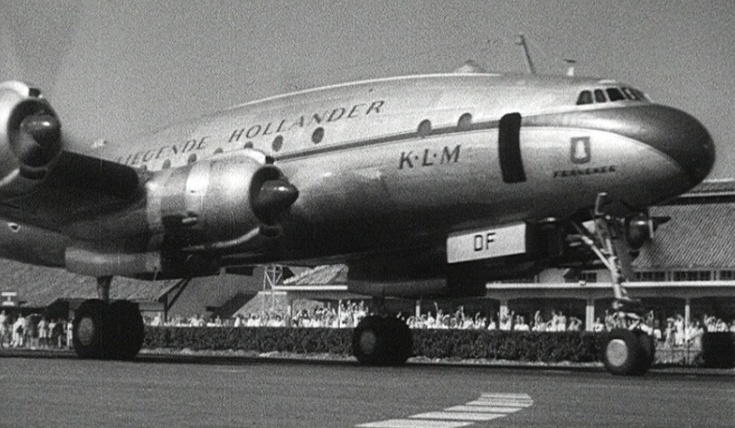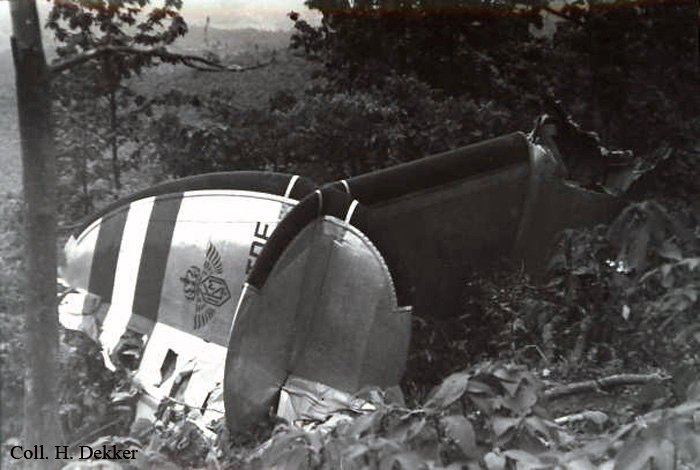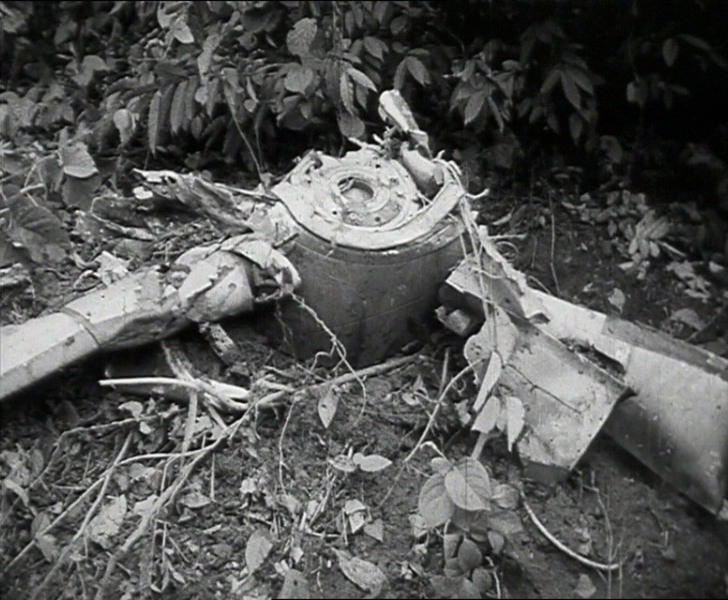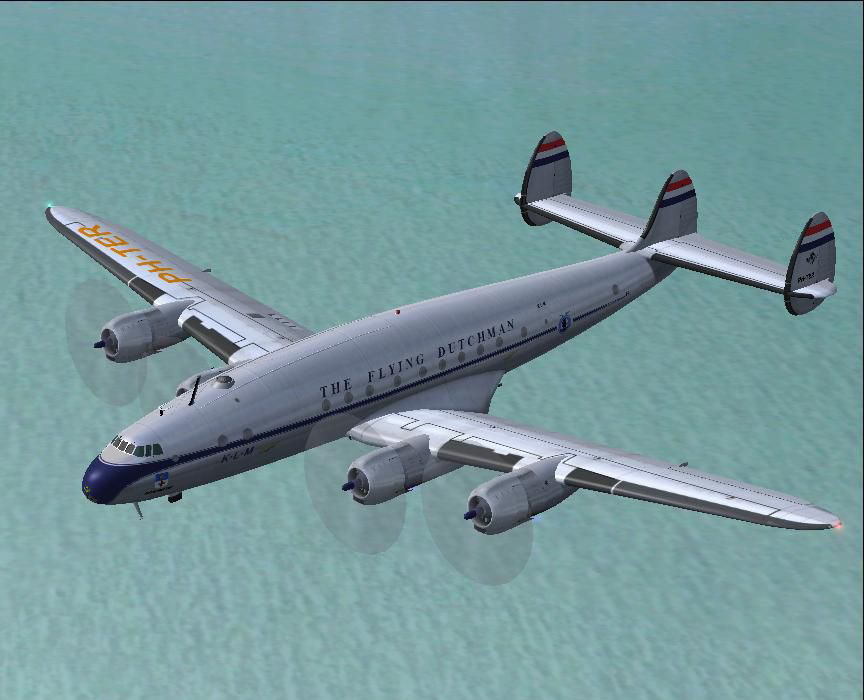Crash of a Lockheed L-749A Constellation in Wadi El Natrun: 55 killed
Date & Time:
Aug 31, 1950 at 0203 LT
Registration:
N6004C
Survivors:
No
Schedule:
Bombay – Cairo – Rome – Geneva – Paris – Shannon – Gander – New York
MSN:
2636
YOM:
1950
Flight number:
TW903
Crew on board:
7
Crew fatalities:
Pax on board:
48
Pax fatalities:
Other fatalities:
Total fatalities:
55
Captain / Total hours on type:
864.00
Copilot / Total hours on type:
363
Aircraft flight hours:
1100
Circumstances:
The four engine aircraft christened 'Star of Maryland' left Cairo-Faruk Airport at 0135LT and was cleared to climb to 14,000 feet. While flying to the northwest at an altitude of 10,000 feet, the engine number three caught fire. The propeller was feathered but the crew was unable to extinguish the fire. the Cairo control tower received a routine position report at 23:55Z "off Cairo 2335 25 miles out of Cairo at 2343 estimated time of arrival Rome 0530" which was acknowledged but the flight did not reply with the customary "Roger". No other message was received from the flight despite frequent attempts to contact it by several stations. At or about the time of the receipt of the above message a number of persons on the desert to the northwest of Cairo saw the aircraft afire in flight. The aircraft turned back as if intending to land at Cairo, but the fire rapidly increased, causing the burning engine to fall free. The crew attempted a night emergency landing in a desert area located about 100 km northwest of Cairo. The aircraft crashed and disintegrated on impact. All 55 occupants were killed, among them tourists, engineers and US diplomats.
Probable cause:
The Board determines that the probable cause of this accident was the failure of the rear row master rod bearing causing an uncontrolled fire which precipitated a crash landing.
The following findings were reported:
- The rear row master rod bearing of No. 3 engine failed during the climb to cruising altitude,
- This bearing failure precipitated a fire in the No. 3 power plant, the No. 3 propeller was feathered,
- The aircraft was turned back toward Cairo and the burning engine shortly fell free,
- Fire continued in the right wing and an attempted night landing on the desert resulted in destruction of the aircraft.
The following findings were reported:
- The rear row master rod bearing of No. 3 engine failed during the climb to cruising altitude,
- This bearing failure precipitated a fire in the No. 3 power plant, the No. 3 propeller was feathered,
- The aircraft was turned back toward Cairo and the burning engine shortly fell free,
- Fire continued in the right wing and an attempted night landing on the desert resulted in destruction of the aircraft.
Final Report:
